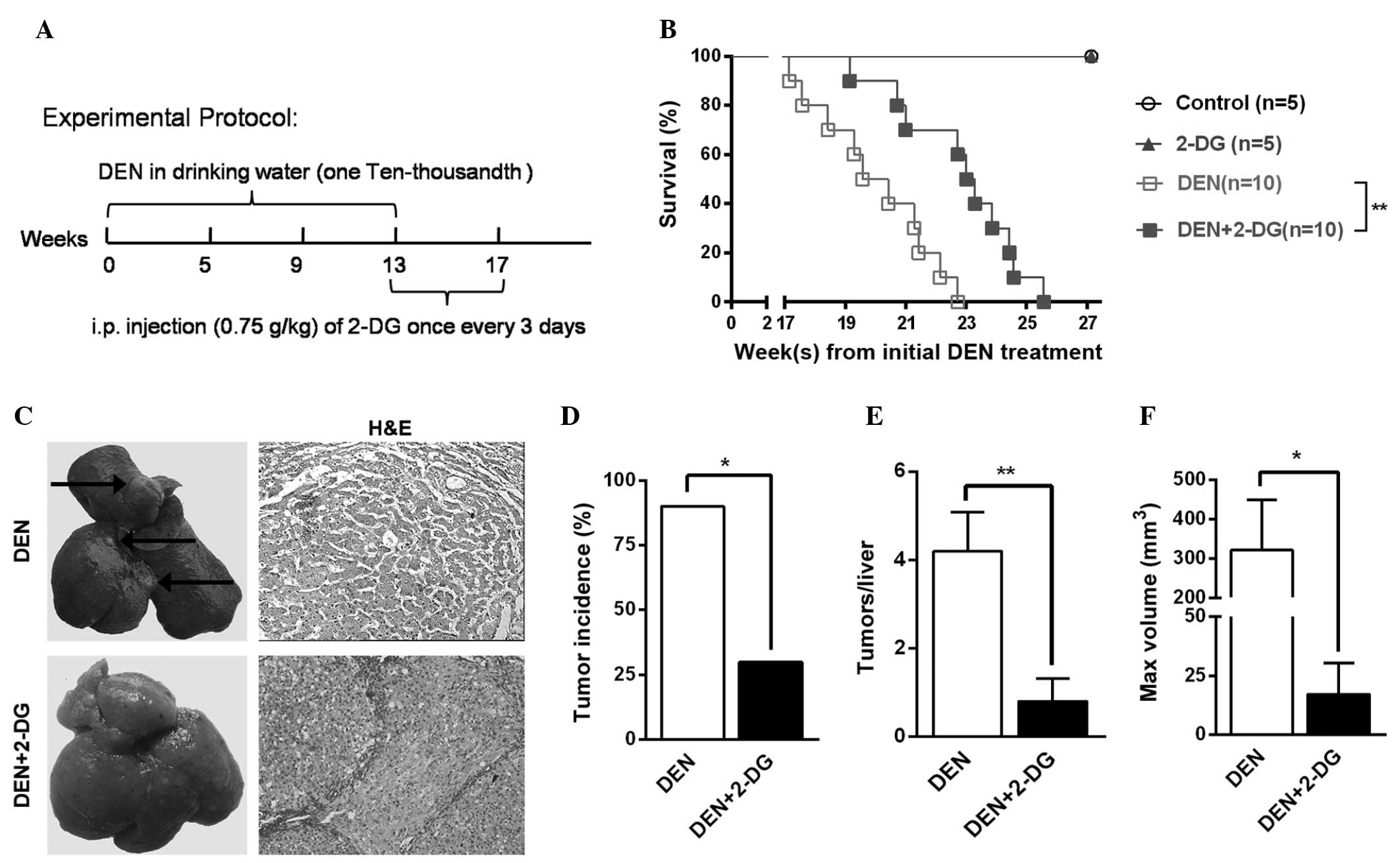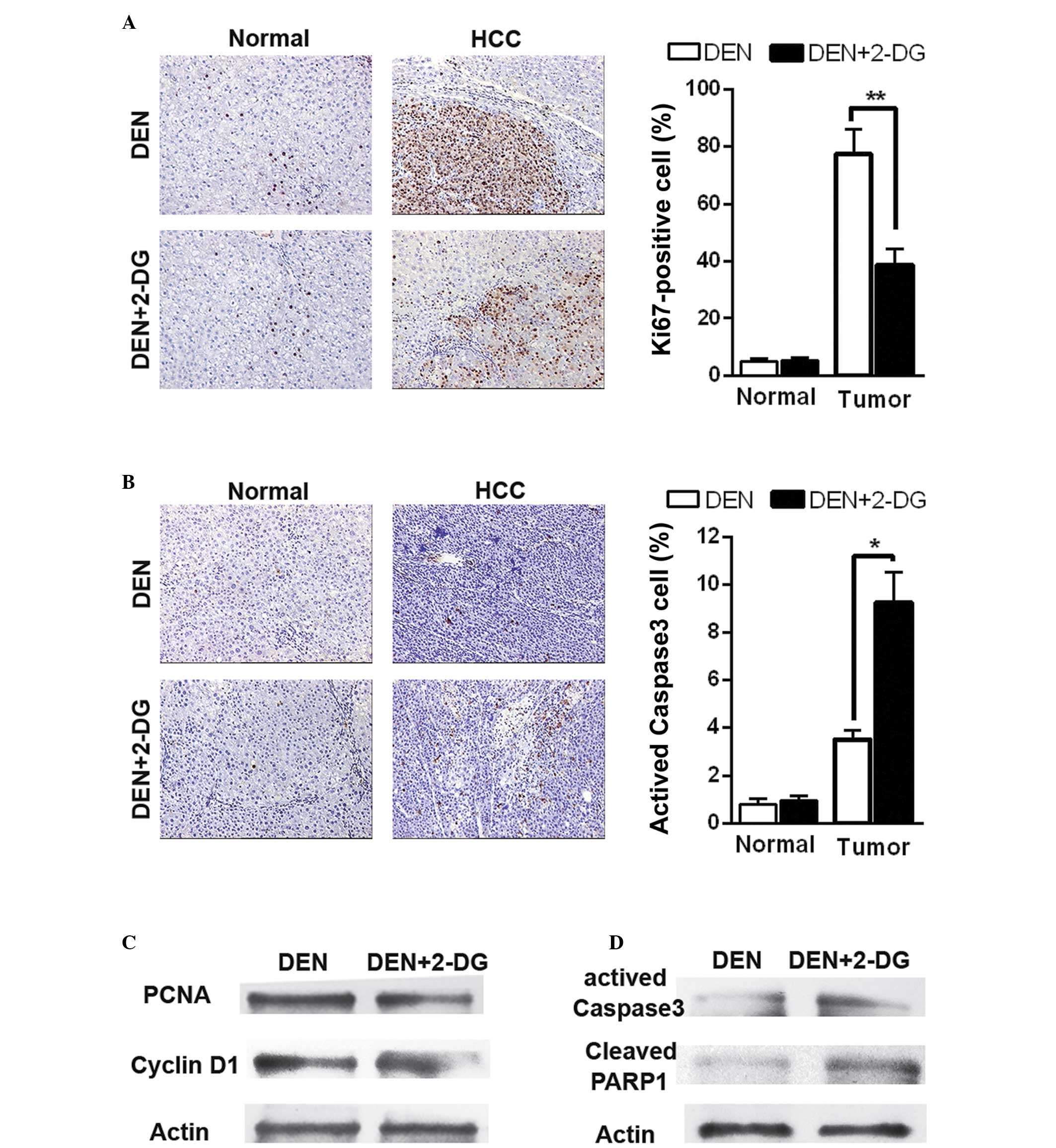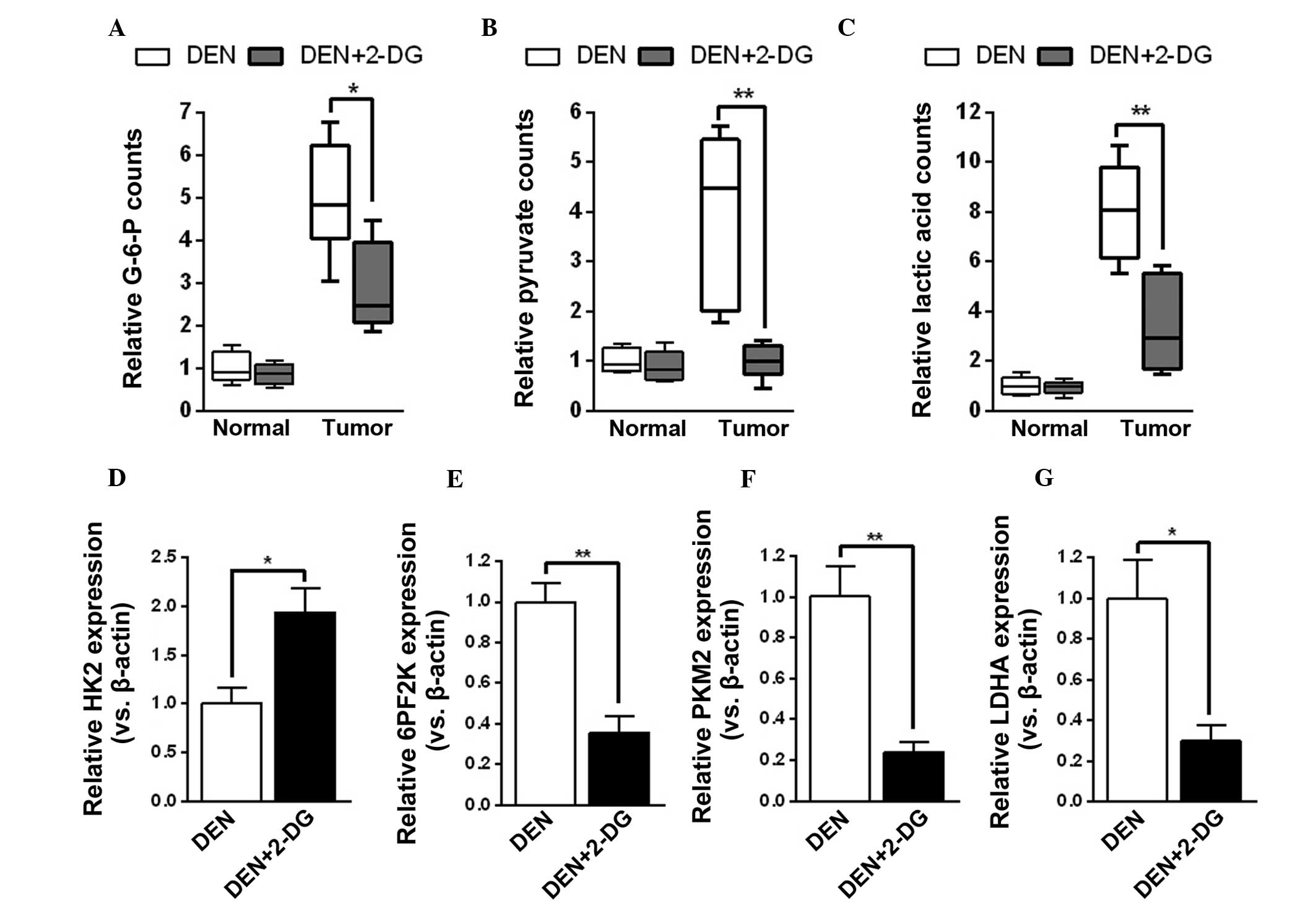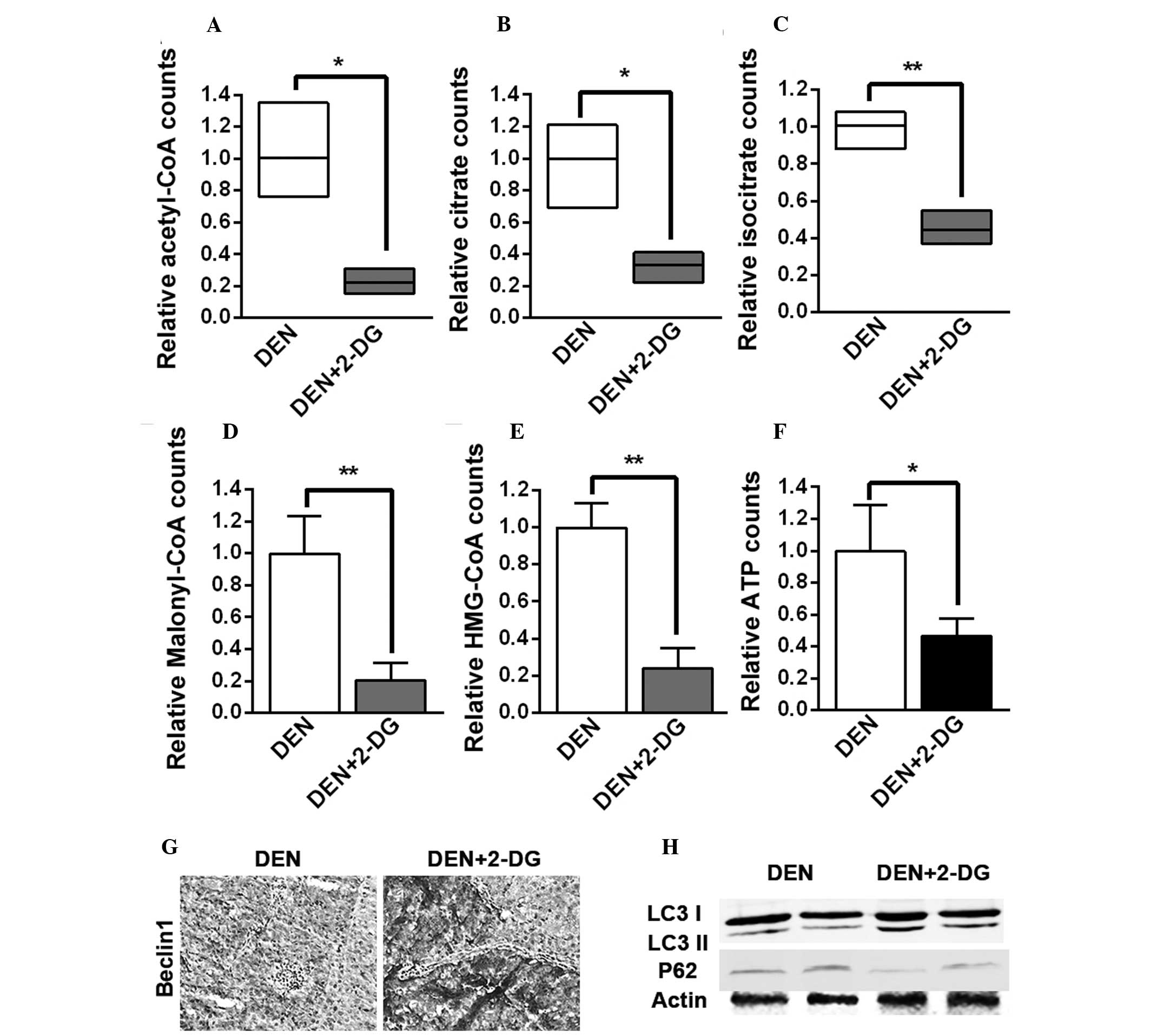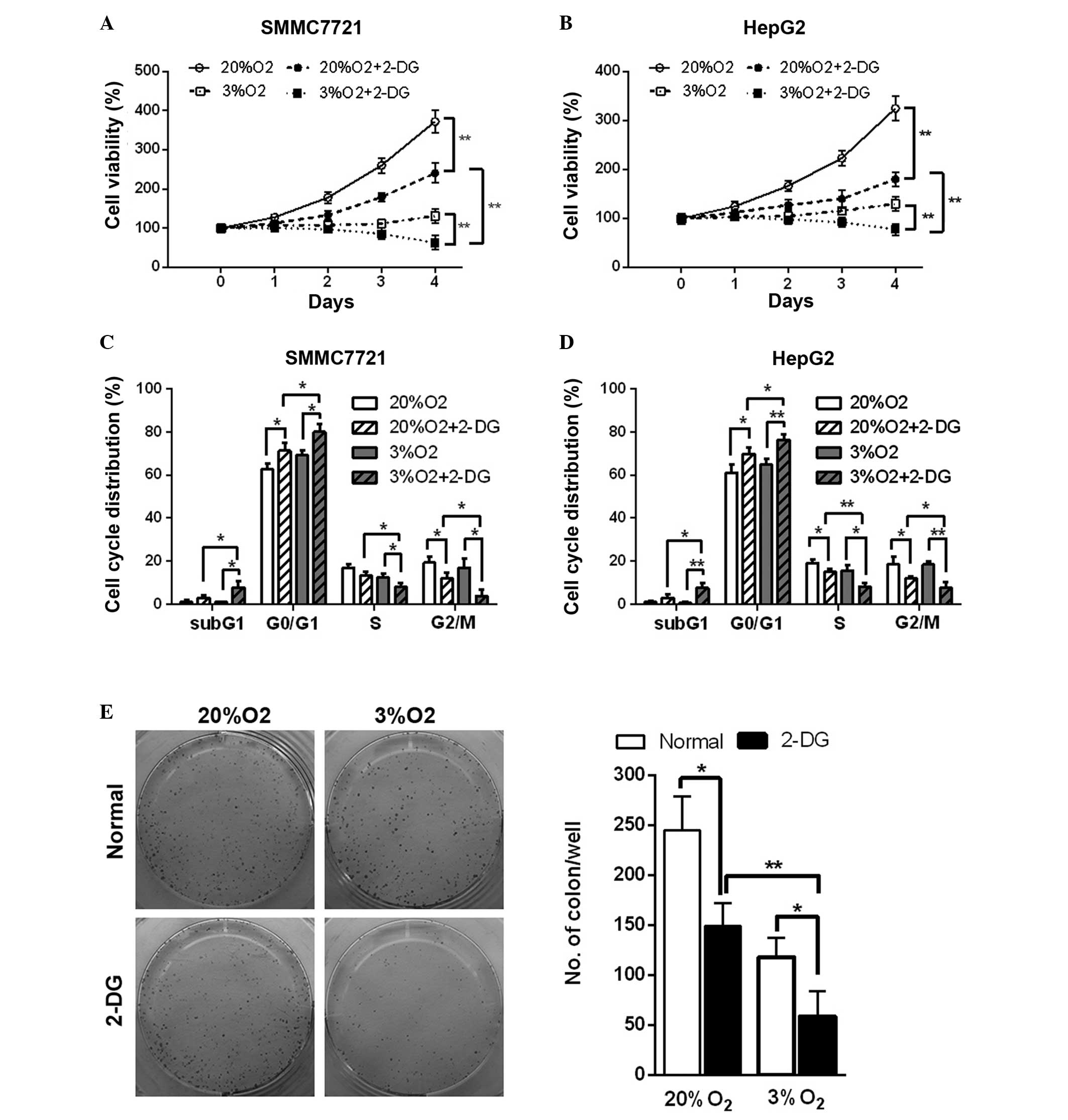Glycolysis inhibitor 2-deoxy-D-glucose suppresses carcinogen-induced rat hepatocarcinogenesis by restricting cancer cell metabolism
- Authors:
- Published online on: November 13, 2014 https://doi.org/10.3892/mmr.2014.2945
- Pages: 1917-1924
Metrics:
Total
Views: 0 (Spandidos Publications: | PMC Statistics:
)
Total PDF Downloads: 0 (Spandidos Publications: | PMC Statistics:
)
Abstract
The abnormal metabolism of cancer cells is a crucial feature of tumors and provides promising therapeutic targets for cancer treatments. Aerobic glycolysis in cancer cells, termed the Warburg effect, is a highlighted characteristic of cancer‑specific metabolism. However, the effect of glycolysis inhibition on hepatocarcinogenesis remains to be elucidated. In the present study, the effects of the glycolysis inhibitor 2‑deoxy‑D‑glucose (2‑DG) on the N‑diethylnitrosamine (DEN)‑induced rat hepatocarcinoma model and its underlying mechanisms were investigated. It was observed that 2‑DG significantly delayed hepatocarcinogenesis and effectively prolonged survival time in the DEN‑treated rats. The glycolysis inhibitor, 2‑DG prominently decreased cell proliferation and increased cell apoptosis in the DEN‑induced rat hepatoma and had no evident impact on the pericarcinomatous liver tissues. Further investigation revealed that 2‑DG resulted in a reduction of glycolysis products, the compensatory increase of hexokinase 2 expression and a decrease in 6‑phosphofructo‑2‑kinase, pyruvate kinase M2 and lactate dehydrogenase A expression in the hepatoma tissues. The inhibition of glycolysis further suppressed the tricarboxylic acid cycle, fatty acid and cholesterol biosynthesis and ATP production, while it promoted autophagic activation. In addition, the in vitro study demonstrated that hypoxia, an important factor in the tumor microenvironment, may assist in increasing 2‑DG‑induced inhibition of cell viability, cell cycle retardation and the decrease of colony formation ability in hepatoma cells. Taken together, the present results suggested that 2‑DG may inhibit hepatocarcinogenesis in the DEN‑treated rats via restricting cancer cell metabolism. This finding provides a promising measure in the prevention and treatment of hepatoma.



